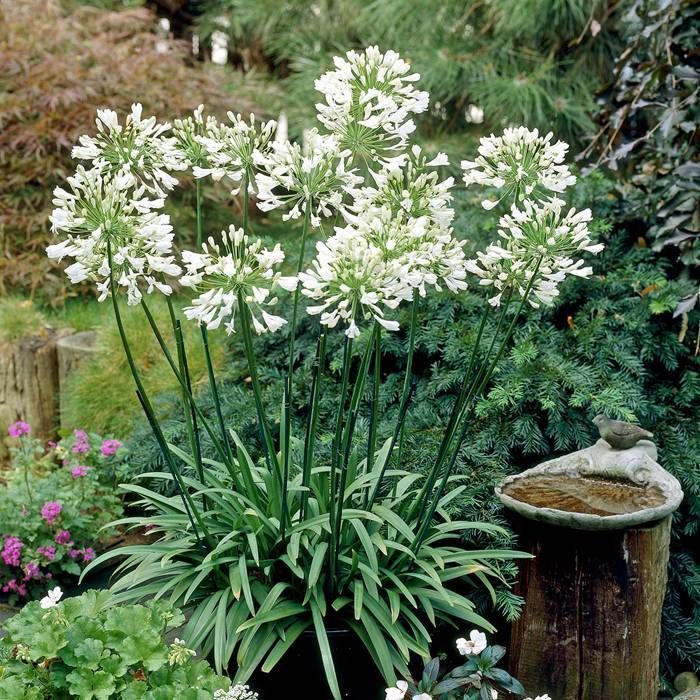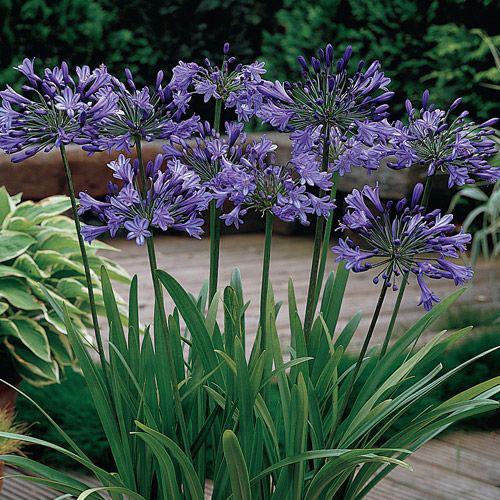Agapanthus Breeding: Tips for Expanding Your Plant Collection
Agapanthus Breeding: Tips for Expanding Your Plant Collection
Blog Article
Grasping the Art of Agapanthus Treatment: Essential Actions for Healthy And Balanced Growth and Lively Flowers
In the realm of cultivation, the farming of agapanthus stands as a satisfying venture for those who look for to nurture these elegant blooming plants. From choosing the right variety to understanding trimming techniques, the trip towards cultivating growing agapanthus plants is diverse and holds the crucial to unlocking the complete capacity of these botanical gems.

Selecting the Right Agapanthus Range

When selecting the best Agapanthus range for your garden, consider variables such as climate suitability, flower color, and growth behavior. Agapanthus, generally referred to as Lily of the Nile or African lily, is available in a range of colors ranging from shades of purple and blue to white. Pick a bloom shade that complements your existing yard scheme to develop an unified landscape. Additionally, consider the environment in your area to make sure the Agapanthus range you select can thrive in your certain conditions. Some varieties are more forgiving of cool temperature levels, while others choose warmer climates. Understanding the development routine of different Agapanthus ranges is important for proper positioning within your yard. Some varieties have a clumping development practice, ideal for containers or borders, while others have an even more dispersing nature, suitable for ground cover or mass growings. By thoroughly assessing these variables, you can pick the perfect Agapanthus selection to enhance the elegance of your yard.
Perfect Planting Conditions
Considering the optimum ecological requirements is crucial for effective Agapanthus growing. Agapanthus grows in well-draining dirt with a somewhat acidic to neutral pH level. When planting, select a location that obtains complete sunshine to partial color. In hotter climates, providing some mid-day color can prevent scorching of the fallen leaves. Agapanthus plants are sensitive to cold temperatures and need to be safeguarded from frost throughout cold weather.
To make certain healthy and balanced development and lively blossoms, plant Agapanthus bulbs at a deepness of concerning 2-4 inches and space them 8-12 inches apart. Adding raw material, such as garden compost, to the dirt can boost drainage and fertility, advertising robust root growth. Mulching around the base of the plants helps keep moisture and reduces weed growth. Routine watering is critical, especially throughout the growing period, to keep the dirt continually moist but not soaked.
Watering and Fertilizing Tips
Maintaining correct dampness degrees and supplying necessary nutrients are vital components in the treatment regimen for Agapanthus plants. When it comes to watering Agapanthus, it is important to strike a balance. These plants favor constantly damp dirt however are at risk to root rot if overwatered.
Fertilizing Agapanthus is essential web for advertising healthy and balanced development and prolific blossoms. Apply a well balanced fertilizer, such as a 10-10-10 formula, in the very early spring as brand-new growth arises. Repeat this application every 6-8 weeks throughout the growing season. Avoid excessive fertilization, as it can result in lavish vegetation at the cost of flowers. Constantly adhere to the producer's guidelines for proper dilution and application approaches. By following these watering and fertilizing ideas, you can guarantee your Agapanthus plants thrive and generate vivid, long-lasting blooms.
Pruning Techniques for Agapanthus
Pruning Agapanthus plants at the appropriate times and with proper strategies is essential for maintaining their wellness and advertising optimum development and flowering. great post to read The excellent time to prune Agapanthus remains in late winter or very early springtime before new development arises. Beginning by getting rid of any type of dead or yellowing fallen leaves near the base of the plant. Cut them as short as feasible without damaging the emerging shoots.
For flowered stems, wait till the flowers have perished and afterwards cut them back to the base. This not only cleans the plant's appearance yet likewise encourages the advancement of new flower buds. Deadheading invested flowers can likewise reroute the plant's energy into generating even more flowers as opposed to setting seeds. However, if you wish to gather seeds for breeding, leave some flowers to completely dry and fully grown on the plant.
Bear in mind to utilize clean, sharp devices to make precise cuts and decrease the risk of introducing conditions. Agapanthus. Routine trimming will certainly aid maintain your Agapanthus looking healthy and balanced and neat while ensuring a plentiful screen of gorgeous blossoms
Handling Common Pests and Conditions
After making sure proper pruning techniques for Agapanthus, it is vital to resolve common parasites and diseases that can impact the health and vigor of these plants. Agapanthus plants are generally sturdy but can still succumb to particular concerns. One common insect that affects Agapanthus is the Agapanthus gall midget. This tiny, orange fly lays its eggs in the foliage, resulting in distorted growth and flower buds that fail to open. To combat this bug, prune and ruin any affected plant components and consider making use of insecticidal soap.
Furthermore, Agapanthus plants can suffer from origin rot if they are grown in poorly draining pipes soil. By being cautious and taking timely activity against diseases and bugs, you can help your Agapanthus plants thrive and create vibrant flowers. Agapanthus.

Verdict
To conclude, grasping the art of agapanthus care entails choosing the ideal range, giving excellent planting conditions, proper watering and feeding, suitable pruning strategies, and attending to common insects and illness. By complying with these important steps, you can guarantee healthy development and vivid blossoms for your agapanthus plants. Remember to on a regular basis Resources monitor and preserve your plants to promote their total health and durability.
To make certain healthy growth and vibrant blooms, plant Agapanthus light bulbs at a deepness of regarding 2-4 inches and room them 8-12 inches apart. By complying with these watering and fertilizing ideas, you can guarantee your Agapanthus plants flourish and generate vivid, resilient flowers.
One common bug that impacts Agapanthus is the Agapanthus gall midget. In addition, Agapanthus plants can suffer from root rot if they are grown in improperly draining dirt. By adhering to these crucial steps, you can make certain healthy and balanced development and lively blooms for your agapanthus plants.
Report this page